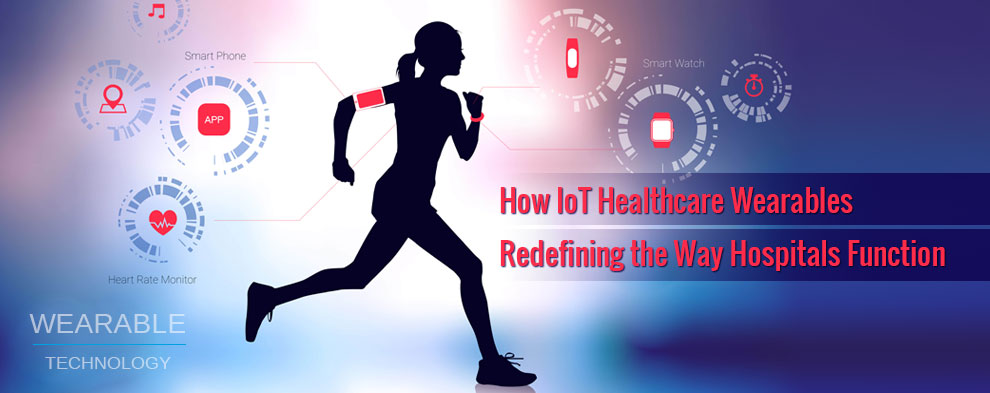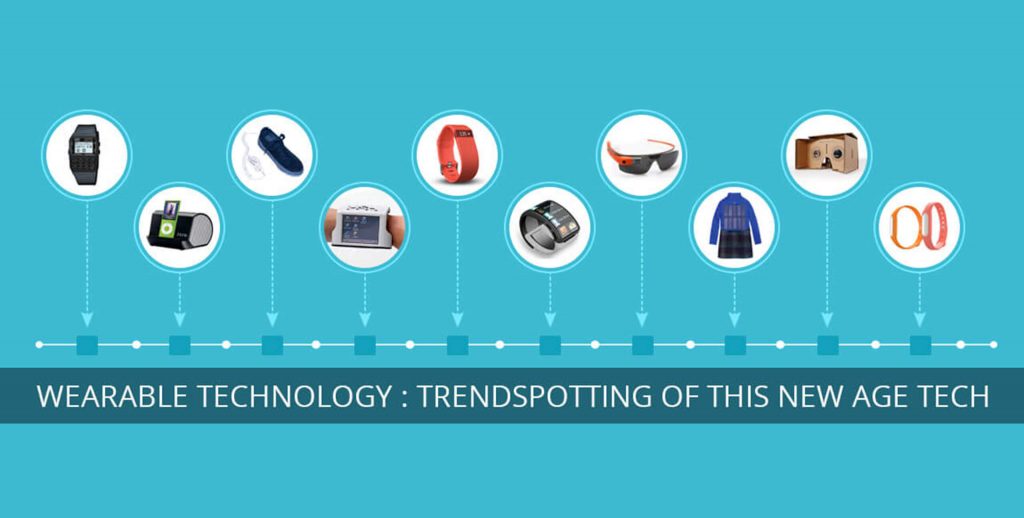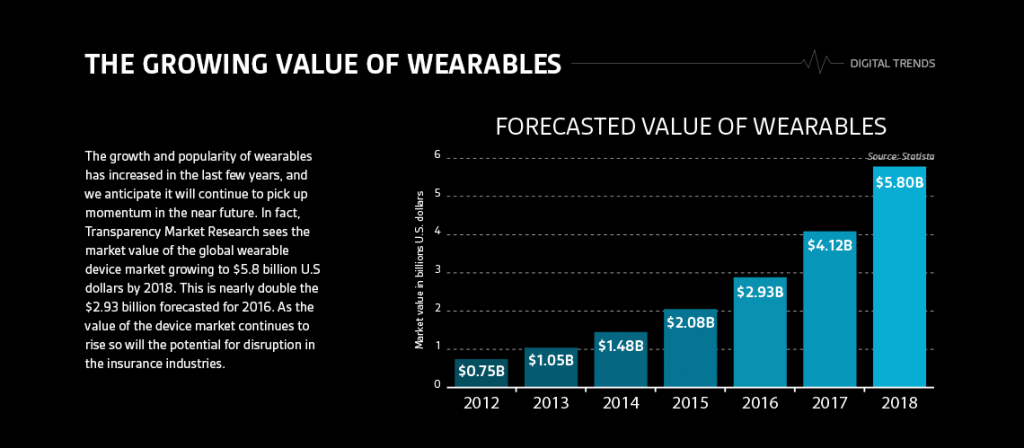
How IoT Healthcare Wearables are Redefining the Way Hospitals Function
In this post, we’re going to discuss the unprecedented potential of the IoT healthcare wearables and how they are reinventing the way hospitals function. Internet of Things in healthcare refers to the future-proof trend of tracking and monitoring medical-oriented devices using the Internet. Thanks to the cutting-edge technology, any device (right from coffee makers and sleep sensors to lamps and washing machines) with an on/off button and a special sensor can now send and receive data via the Internet.
Technology in the last few years, especially in the medical sector has grown tremendously, thereby enabling us to closely monitor our health. IoT healthcare wearables including wristbands that track pulse rate and steps, sleep sensors, smart glasses and defibrillators to personal blood pressure checkers, insulin pumps and body fat measuring weighing scales has brought in a futuristic revolution in the wellness sector.
As per Machina Research’s Report: Machine-to-Machine (M2M) Communications in Healthcare 2013-23,
In a country like the United States, with healthcare spending nearing 20% of national GDP, M2M technology may well provide the single most promising approach to expanding healthcare services in a cost-effective manner. While the cost dynamics of healthcare are a key factor driving innovation in the field, connected health devices and applications are also proving to be a key element in improving patient engagement and health.
As per predictions by Machina Research, the number of IoT wearables in the healthcare sector globally is expected to reach 1.2 billion by 2024.
Internet of Things in healthcare is spreading like wildfire. Gone are the days when people had to visit their doctors on regular basis to monitor their blood pressure and sugar levels. The IoT wearable devices can do a lot more than just giving you pulse readings. As per a survey, more than 75% of the respondents believe that wearable healthcare monitoring devices should become ubiquitous, as these IoT-enabled healthcare devices greatly motivate the users to lead healthier lives.
In 2016, the global healthcare wearables market was valued at over $5 billion and it is expected to reach 12 billion by 2021. Click To Tweet
Following are a few significant aspects of IoT solutions in healthcare –
- The US FDA (Food and Drug Administration) in 2017, had approved an ingestible sensor. It’s a pill integrated with a small electronic circuit and empowered by the acids for the stomach. This ingestible pill comprises of a tiny transmitter capable of transmitting data about a person’s diet to an external monitor, as well as reporting on the levels of any medications.
- As per Centers for Disease Control and Prevention, around half of the American elderly population suffer from one or more chronic health conditions. IoT in healthcare wearables including implantable devices is evolving rapidly, so as to help doctors receive real-time data in a fizzy.
- Internet of Things in healthcare with the help of advanced cognitive analytics and AI is helping diagnostic practices progress proactively, for instance, enhanced MRI and X-Ray machines which can even detect and identify hard to see and obscure conditions that are often missed by the human eye.
- Parents can now have a sound sleep, thanks to the smart stuffed animal that can now check their babies’ heart rate, temperature, and the oxygen saturation when it receives hugs.
- IoT-enabled sensors are integrated into medication bottle lids which help monitor and manage adherence to treatment protocols.
- IoT healthcare wearables enable the motion sensors to monitor the senior citizens’ health conditions who are especially living alone and immediately notify the caregivers of falls or if the elderly person does not get up from the bed.
- Many avant-garde mobile apps for nurses have been launched in 2018 which help nurses to monitor their patients’ activities including their chiropractic sessions, wound-care plans etc. These IoT mobile apps also help them in taking inputs about their patients’ symptoms and learn possible conditions based on those symptoms.
How IoT healthcare wearables are redefining the way hospitals function

- Location-based real-time services
IoT solutions in healthcare enable professionals to track patients’ whereabouts. The IoT healthcare wearables can be of great help in such situations when an injured person seeking urgent medical aid. Besides, medical equipment such as wheelchairs, monitoring devices, defibrillators, scales etc. can be tagged with IoT sensors to locate them easily. IoT healthcare devices also help in real-time environmental monitoring such as checking room temperature.
- Enhance Patient Experience
IoT devices help in enhancing the patient experience. The seamless connection between devices enables the patients to control the room temperate and lighting of their cabin they are admitted into. They can also communicate with their friends and family via video calling, and call nurses via intercom. IoT solutions in healthcare also provide the medical staff easy access to patient’s information from the cloud.
- Remote Monitoring
Remote monitoring of health is another significant aspect of IoT in healthcare wearables. These IoT healthcare wearables help to monitor a patient’s health and warn them about any early symptoms of any chronic disease. In most of the cases, say cancer, patients die as they were not timely diagnosed and did not receive medical attention at the real-time. IoT solutions in healthcare can greatly resolve this underlying issue. IoT medical devices can apply complex algorithms and analyze the diseases in advance. There are companies who have been offering tremendous IoT solutions. These companies assist hospitals in providing timely medical attention and proper care to patients in remote areas, where doctors cannot physically go.
Conclusion

IoT healthcare wearables and IoT based healthcare projects are here to stay. Their futuristic privileges are going to augment the IoT wearables market and their usages are expected to significantly rise over the next few years. And as IoT healthcare providers are constantly working on the challenges of IoT in healthcare, it is however confirmed that IoT based healthcare projects are going to play a far-reaching role in the healthcare sector.
However, companies that develop health-focused wearable technology should follow industry standards during the conceptualization stages itself.
If you too agree IoT healthcare wearables are enabling state-of-the-art, resilient, trustworthy and effective healthcare ecosystems and if at all you have any use cases on mobile-enabled solutions for medical devices and clinical software, do share them in the comment box below or write to us at ✉ info@athenagt.com
